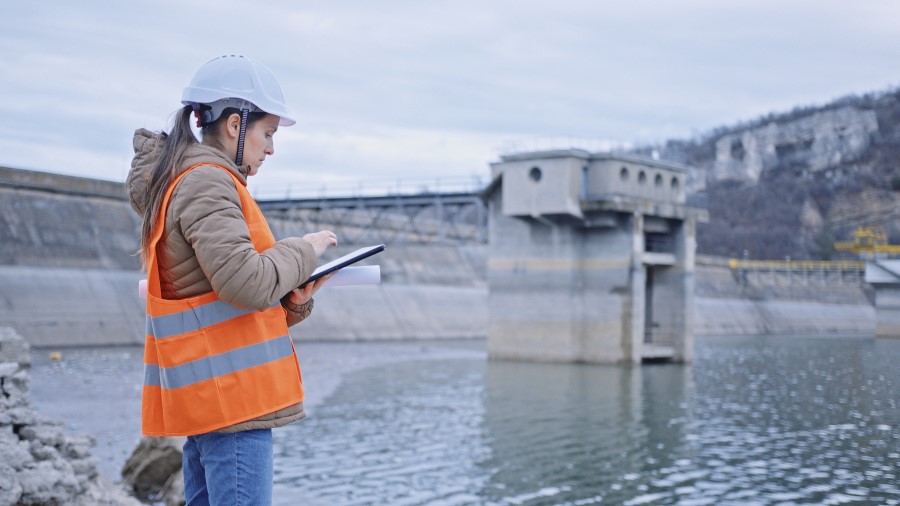
Advancements in Acoustic Tomography for Water Data Metering: Embracing New Technologies and Innovations
Introduction:
Water management plays a critical role in ensuring the sustainable use and conservation of this vital resource. To effectively monitor and manage water systems, advancements in technology are constantly being explored. One such advancement is acoustic tomography, a cutting-edge technique that utilizes sound waves to gather precise data about water bodies. In this blog, we’ll delve into the exciting advancements in acoustic tomography for water data metering, exploring new technologies and innovations that are revolutionizing the field.
1. Introduction to Acoustic Tomography:
Acoustic tomography is a non-invasive technique that utilizes sound waves to measure and visualize properties of water bodies. It operates on the principle that sound waves travel at different speeds through variations in water density, temperature, and other environmental factors. By emitting acoustic signals and measuring the time it takes for those signals to travel through the water, detailed data about water properties can be obtained.
2. High-resolution Imaging and Real-Time Monitoring:
In the realm of acoustic tomography, a remarkable advancement has emerged through the development of high-resolution imaging and real-time monitoring capabilities. This progress has been made possible by groundbreaking innovations in sensor technologies and sophisticated data processing algorithms. These advancements have revolutionized the collection and interpretation of data about water bodies, providing a level of precision and detail that was previously unattainable.
With the ability to capture high-resolution images and data in real-time, acoustic tomography can now provide an incredibly accurate and up-to-the-minute view of water properties. Parameters such as temperature, salinity, and flow rates can be continually monitored with exceptional accuracy and reliability. This wealth of information empowers water management professionals to make informed decisions and devise effective strategies for preserving and optimizing water resources.
The high-resolution imaging capabilities of acoustic tomography allow for a comprehensive understanding of water bodies by providing intricate details of their composition and structure. It enables the detection of subtle changes, such as temperature gradients or variations in salinity, aiding in the identification of potential issues or anomalies in the water system. This fine-grained analysis facilitates proactive management and timely interventions to mitigate risks and ensure the sustainable use of water resources.
Real-time monitoring is a game-changer in water management. The ability to capture data instantaneously and continuously, rather than through periodic sampling, provides a dynamic and accurate representation of water conditions. This enables swift response to environmental variations and the ability to adapt management strategies accordingly. By having real-time insights into parameters like flow rates, which are vital for optimizing water distribution and efficiency, stakeholders can implement efficient measures and make immediate adjustments, leading to improved resource management and reduced wastage.
The synergy of high-resolution imaging and real-time monitoring capabilities in acoustic tomography has truly elevated the field of water management. It empowers decision-makers with unprecedented insights into water systems, enhancing their ability to predict, assess, and respond effectively to changes and challenges. This advancement is a significant step forward in achieving sustainable management practices and ensuring the availability of this vital resource for future generations.
3. Deployment of Sensor Networks:
Advancements in acoustic tomography have opened up a new realm of possibilities through the deployment of sensor networks. Water management professionals can now employ multiple acoustic sensors strategically positioned throughout large water systems, creating a network that enables comprehensive coverage and monitoring. This approach revolutionizes the way we gather data by allowing simultaneous data collection from multiple points within the water body.
By deploying sensor networks, water managers can achieve a more comprehensive and detailed understanding of water properties. The network of acoustic sensors provides a wealth of data, enabling them to monitor temperature, salinity, flow rates, and other critical parameters at various locations within the water system. This not only improves accuracy but also provides valuable insights into spatial variations and localized challenges within the system.
The deployment of sensor networks enables efficient water management strategies by facilitating real-time monitoring and response. By gathering data from multiple points simultaneously, water managers can identify and address anomalies or changes in water properties with greater speed and precision. This proactive approach allows for timely interventions and targeted measures to optimize water distribution, mitigate risks, and ensure the sustainable use of water resources.
Furthermore, the comprehensive coverage provided by sensor networks enhances early detection of potential issues. By capturing data from various points within the water system, it becomes easier to identify localized challenges such as temperature gradients, salinity variations, or areas of low flow rates. This fine-grained understanding enables water managers to make informed decisions and implement site-specific interventions as needed.
In conclusion, the deployment of sensor networks in acoustic tomography has transformed water system monitoring. By simultaneously collecting data from multiple points within the water body, comprehensive coverage and real-time monitoring become achievable. This approach enhances the accuracy, efficiency, and effectiveness of water management, providing invaluable insights and enabling proactive strategies for sustainable water resource management.
4. Integration with Remote Sensing and IoT Technologies:
The integration of acoustic tomography with remote sensing and Internet of Things (IoT) technologies has ushered in a new era of possibilities for water data metering. Remote sensing techniques, encompassing satellite imagery and aerial surveys, provide valuable insights into large-scale water systems. When combined with acoustic tomography data, a holistic view of water resources emerges, supporting effective water management strategies.
By merging data from acoustic tomography and remote sensing, water managers gain a comprehensive understanding of water systems at various scales. Remote sensing techniques, such as satellite imagery, provide broad coverage of water bodies, capturing data on parameters like water extent, land use, and vegetation cover. This macro-level information, when integrated with fine-grained data obtained from acoustic tomography, allows for a multidimensional analysis and a more complete picture of the water ecosystem.
The integration of acoustic tomography with IoT technologies takes water metering to new heights. IoT devices seamlessly connect acoustic tomography devices to networks, enabling remote monitoring and real-time data transmission. This connectivity allows water managers to access and analyze data instantaneously from any location, facilitating prompt decision-making and swift response to any changes or disturbances in the water system.
The combination of acoustic tomography, remote sensing, and IoT technologies enables water managers to monitor water resources with heightened accuracy, efficiency, and scope. The integration of remote sensing data adds a macro perspective to the localized data obtained through acoustic tomography, facilitating a comprehensive assessment of water systems. Moreover, the utilization of IoT technologies empowers water managers with the tools to monitor and manage data remotely, facilita
5. Data Analytics and Artificial Intelligence:
Another significant stride in acoustic tomography for water data metering lies in the utilization of data analytics and artificial intelligence (AI) algorithms. These powerful technologies enable the extraction of valuable insights from the complex datasets collected by acoustic sensors. By harnessing the potential of AI algorithms, trends, patterns, and anomalies can be detected, providing actionable information to optimize water resource management.
Data analytics and AI algorithms play a pivotal role in transforming raw data into actionable insights. By processing extensive datasets obtained through acoustic tomography, these techniques can identify trends and patterns that may offer critical information for water management. For example, by recognizing long-term temperature or salinity variations, water managers can proactively adapt their strategies to mitigate potential challenges.
One of the key strengths of data analytics and AI algorithms is their capacity to detect anomalies. These algorithms can identify deviations from expected values, revealing potential water quality issues or abnormal system behavior. Early detection of such anomalies allows for prompt investigation and action, minimizing the risk of systemic problems and ensuring the delivery of safe water to consumers.
Furthermore, data analytics and AI enable the optimization of water distribution systems. By analyzing large amounts of data, these technologies can identify inefficiencies and suggest improvements in water flow, reducing energy consumption, and optimizing resource allocation. With real-time monitoring and AI-powered decision support systems, water managers can make informed choices and fine-tune their distribution strategies to enhance efficiency and reduce waste.
In conclusion, the integration of data analytics and AI algorithms into acoustic tomography for water data metering presents unparalleled opportunities for water management. These technologies facilitate the extraction of valuable insights from complex datasets, empowering water managers to optimize resource management, detect anomalies, and enhance distribution systems. Through their utilization, water practitioners can harness the full potential of acoustic tomography and drive informed decision-making, ultimately leading to the efficient and sustainable use of water resources.
Conclusion:
Advancements in acoustic tomography have transformed the landscape of water data metering, providing accurate and real-time information about water bodies. High-resolution imaging, sensor networks, integration with remote sensing and IoT technologies, and the utilization of data analytics and AI have revolutionized water resource management strategies. These advancements enable efficient decision-making processes, enhance water conservation efforts, and support the sustainable use of this precious resource. As technology continues to evolve, we can anticipate further innovations in acoustic tomography, contributing to the advancement of water metering and the effective preservation of our water ecosystems.
